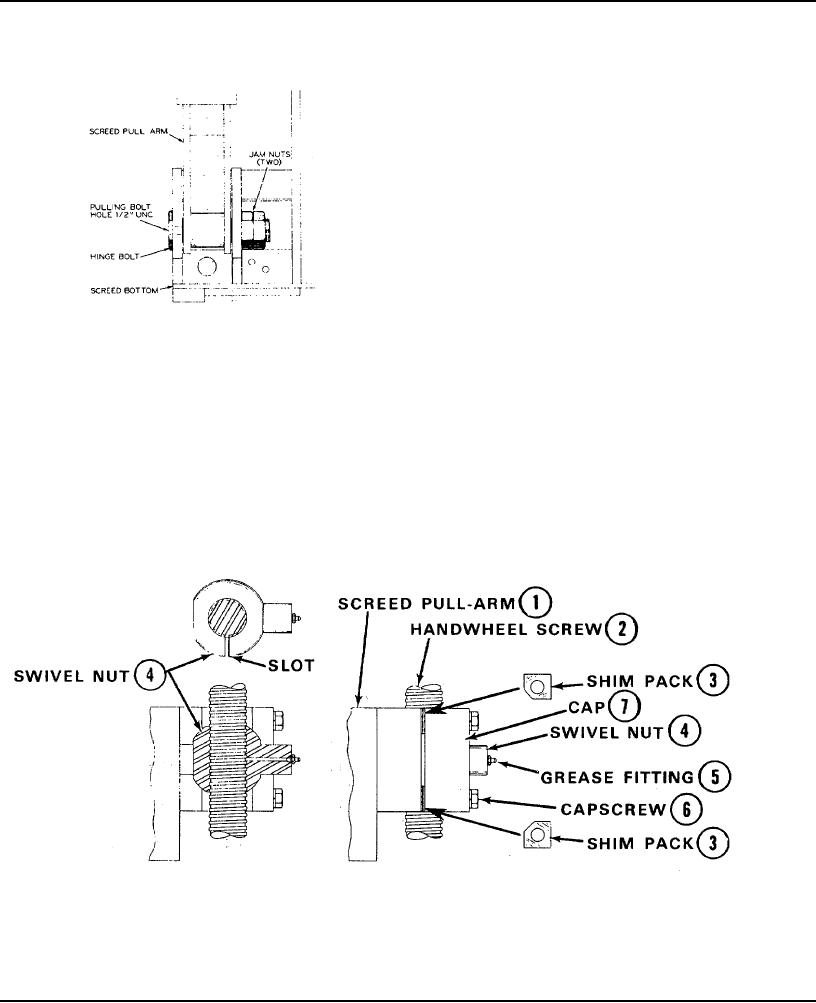
become worn, they should be replaced so that no Swivel Nut Adjustment (Refer to Figure 36)
play develops at that critical point to produce a
The pull arm couplings are slotted Swivel Nuts (4)
waviness in the mat. Hinge bolts are made with "1/2' which utilize the ball and socket principle. The
UNC pulling bolt hole to aid in bolt removal (See Figure 35). socket is made up of the pull arm (1) and Cap (7)
with four Shim Packs (3) used for adjustability.
Adjustment of the Shim Pack thickness changes the
amount of "squeeze" exerted on the slotted Swivel
Nut (4) and the corresponding tightness of fit
against the Screw (2) threads.
Whenever looseness is felt, first check the four
Capscrews (6) for tightness. If they are tight, remove
them and Cap (7). Remove an equal amount of
Shim Pack (3) stock from the four packs and reassemble.
Replace worn Swivel Nuts (4) when adjustment no
longer corrects looseness.
Detailed Of Screed Hinge Bolt In-place
Ball Coupling (Refer to Figure 37)
Figure 35).
Normally handwheel screw looseness will be due
to clearance at the two Swivel Nuts (4). It can,
HANDWHEEL SCREW MAINTENANCE
however, be due to badly worn ball bearings at the
Both handwheel screw assemblies should be kept
lower end coupling point. If it is determined that the
in good operating condition so that they hold the
screed couplings are at fault, refer to following
screed rigidly at the desired setting. Looseness at the
paragraphs for replacement instructions.
two pull arm coupling points or at the two screed
coupling points will allow free up and down
movement of the screed and corresponding waves in
the mat surface. There must never be more than
three notches of play (free handwheel movement,
without affect on the screed).
Detail Of Screed Handwheel Screw And Pull-arm Swivel Nut Coupling
Figure 36
Page 115

